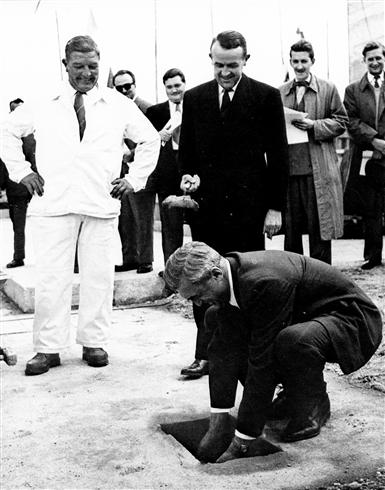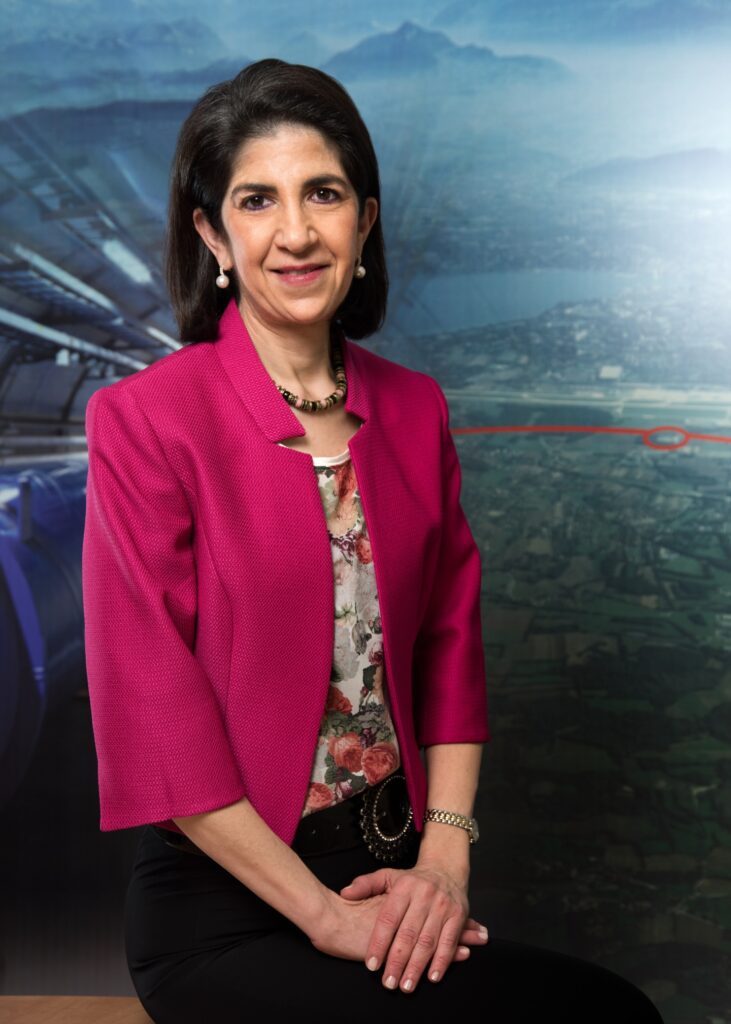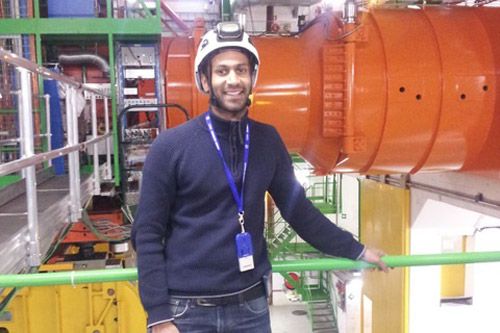Artificial Intelligence
Future Telecoms
Quantum
Future telecoms 2025 to 2026: from faster networks to thinking infrastructure
Reading time: 7 mins
CERN’s groundbreaking research not only explores the universe’s mysteries but also powers technological advances in computing, healthcare, and industry
From the birth of the world wide web to the latest advances in quantum computing, CERN’s contributions continue to ripple through industries far beyond the scientific community. Founded in the wake of World War II with a mission to unify European science, the lab that once helped to unlock the mysteries of the atom has gone on to create more groundbreaking innovations that shape our world.

Based on the outskirts of Geneva in Switzerland, CERN celebrates its 70th anniversary tomorrow and is pressing ahead with plans for a new £20bn facility called the Future Circular Collider (FCC). It’s not without its critics of course, given the eye-watering sums of money – the German government questioned its investment in June, for example – but CERN remains a true melting pot of experimentation and innovation, and there are plenty of discoveries that have benefited the global economy and justify the funding.
For Sir Chris Llewellyn Smith, a former director-general of CERN and emeritus professor of physics at the University of Oxford, these broader economic benefits have to be taken into context. While he recognises the value of these discoveries, they are, he suggests, by-products. It’s important, he says, to recognise that CERN’s core mission remains about advancing knowledge rather than immediate economic returns.
“I don’t think you can justify CERN on the grounds it’s going to make fundamental discoveries which will pay for themselves,” says Llewellyn Smith. “The real justification is that it’s pushing back human knowledge. An urge to understand the nature of matter and the structure of the universe is as old as civilisation.”
Llewellyn Smith, who was director-general at CERN from 1994 until 1998, has played a big part in enabling the development of the Large Hadron Collider (LHC). In 1993, while he was director-general designate of CERN, he put together the proposal to build the LHC and prepared a long-term plan for CERN, which he presented to the CERN Council at the end of the year. During his time as director-general, the LHC was approved, construction started, and major contributions from Canada, India, Japan, the Russian Federation, and the USA were negotiated.
“Securing approval for the LHC was an extremely satisfying experience, especially the diplomatic aspects, which were new to me,” Llewellyn Smith told BI Foresight. “In retrospect, the fact that it was approved might seem obvious but back in the 1980s, with the Superconducting Super Collider (SSC) being built in the US, it didn’t look obvious at all. In fact, my predecessor, in 1993, thought the LHC was too expensive and would never be funded alongside the SSC. By autumn 1994, I was even told by one of CERN’s member state governments that we were staring into the abyss unless we could cut 20% off the cost. But we got it done, and bringing in the other member states was incredibly satisfying.”Understandably, much of the attention at CERN today is drawn towards the LHC and since July 2012, the discovery of the Higgs boson, or ‘God particle’ – which saw theoretical physicists Peter Higgs and Francois Englert receive the Nobel Prize for physics in 2013. And if we ever needed a reminder why CERN continues to be at the forefront of scientific innovation, last week’s announcement that LHC experiments observed “quantum entanglement at the highest energy yet,” was just that. As baffling as it sounds (at least to non-particle physicists) quantum entanglement is important for the on-going development and speeds of quantum computers.
CERN, with an annual budget of approximately €1.4 billion this year, is certainly the sort of place you want on your side and quantum technology is one area where it is already making a difference. CERN outlined its quantum technology initiative in 2021 and continues to enhance collaboration between high-energy physics experimentation and quantum technology communities.
It is typical of how CERN continues to make itself relevant to industry while in pursuit of pioneering discoveries in particle physics, but there has always been more to CERN, thanks mostly to its international nature and pursuit of the unknown.
Joel Goldstein, professor of physics at the University of Bristol, who refers to CERN as the “centre of the world for particle physicists,” says that the very nature of its work pushes boundaries across all disciplines. As history has shown, this has led to incredible innovations, byproducts of world-leading experimentation and problem solving.
“We’re probing the structure of the universe, the structure of nature at scales 100,000 times smaller than a proton. The engineering is amazing,” says Goldstein, listing numerous instances where CERN has created new technologies, ideas, and ways of working.
“Cloud computing was invented at CERN for the LHC data analysis,” he adds. “The world wide web was invented at CERN just so particle physicists could collaborate internationally, and there’s a huge interplay with the medical sector, especially in radiotherapy and imaging.”
These are just the tip of the iceberg. Goldstein, for whom CERN has become a regular part of the working calendar, also talks about “pushing the boundaries with radio frequency and semiconductor technology,” and highlights the opportunities for businesses to obtain CERN contracts, to collaborate and build companies.

There are certainly plenty of examples to support this idea. Positron Emission Tomography (PET) scans and advancements in radiation therapy are some, plus advanced data-processing techniques and big data analytics (the LHC produces over 25 petabytes of data a year), as well as the Worldwide LHC Computing Grid, a network of over 170 computing centres worldwide. In addition, CERN says its knowledge transfer has resulted in more than 500 patents filed since its inception and the establishment of 34 new companies in 2023 alone.
Fabiola Gianotti, CERN’s current director-general, said in a recent statement that CERN has been “at the forefront of scientific knowledge and technological innovation,” adding that it is also “a model for training and education, collaboration and open science, and an inspiration for citizens around the world.”
Interestingly this year, CERN expects revenues of €2.9 million from knowledge transfer, primarily driven by collaborations in medical technologies and industrial partnerships. Bristol’s Goldstein says that this is an area where the UK could do better, something which the previous government tried to address with its CERN strategy.
As justification for academic investment it is strong. Llewellyn Smith adds that CERN’s innovations in computing, superconductivity, and other fields have provided “substantial benefits to society” but maintains that the lab’s core mission remains fundamental research. He recognises the value of industry, of course, but is adamant that CERN does not get distracted from its main focus.
Dr Sudarshan Paramesvaran, associate professor of physics at the University of Bristol, backs-up Llewellyn Smith’s idea that the physics work should speak for itself and anything else will follow as a result. Like Llewellyn Smith he cites the international nature of CERN as a real strength.
“Each country has a way of teaching science, and you end up talking to people who look at problems differently,” says Paramesvaran. “It’s unusual to have thousands of people from all different continents working together like this. I think we need that, because what we’re trying to do is difficult, and having the maximum number of perspectives is a strong way to attack it.”
This stems from CERN’s origins in post-war Europe. “It had from the beginning this sort of ‘Atoms for Peace’ idea,” says Llewellyn Smith. “Right through the Cold War, scientists from Poland and other countries in Central Europe contributed to the CERN program. In the 1980s, the Russians started contributing components to the LHC machine.”
CERN maintained scientific collaboration even during political tensions, especially with Eastern Bloc countries during the Cold War, but that is changing. Diplomatic challenges in light of the Ukraine conflict have led to a decision to terminate agreements and expel hundreds of scientists connected to Russian research organisations. However, CERN will maintain its links with the Joint Institute for Nuclear Research (JINR), an intergovernmental centre near Moscow.
“I’m afraid that we are going to lose the input from Russia,” says Llewellyn Smith. “I understand that it’s obviously diplomatically necessary, but it’s a great pity, because these bridges between people on each side, do reflect the Atoms for Peace idea.”

For Paramesvaran, the collaborations, not just with physicists but also with engineers and IT programmers from a multitude of countries, have been a welcome benefit of working at CERN. Solving problems and pushing ideas to the limit are part of the joys of CERN research, as scientists like Paramesvaran try to shed light on some of the deepest mysteries of the universe, such as the nature of dark matter or dark energy.
“The nature of the work – huge detectors, huge amounts of data, and looking for a real needle in a haystack – has led to tools being developed to help us achieve these scientific goals,” says Paramesvaran, adding that he’s been using AI for years, for example, to help analyse data. And this is not about to stop.
“We’re moving from LHC to High-Luminosity LHC, an upgrade of the ring and detectors, and we’ll get an order of magnitude more data. It’s a turning point. We’ve only taken less than 10% of the data, so there’s a lot more to come.”
That’s CERN in a nutshell. It unquestionably remains a valuable source of innovation just by continuing to do what it does. And who would bet against it coming up with the sort of technologies and tools that could transform society yet again?
Continued investment in research not only propels scientific understanding but also catalyses economic growth and social development. Supporting institutions like CERN surely ensures that the innovations of tomorrow can emerge from today’s scientific breakthroughs.
25 – petabytes of data produced by the LHC annually
>500 – patents filed since CERN’s inception
1m – annual visitors through tours and educational programmes
43% – reduction in greenhouse gas emissions since 2019 due to innovative energy saving
34 – new companies CERN has helped to establish in 2023 alone
€3 – economic return in the European economy for every €1 invested in CERN’s research
10K – scientists from more than 100 countries that work with or at CERN

Working as a technology journalist and writer since 1989, Marc has written for a wide range of titles on technology, business, education, politics and sustainability, with work appearing in The Guardian, The Register, New Statesman, Computer Weekly and many more.
Quantum
Reading time: 10 mins
Quantum
Reading time: 10 mins
Quantum
Reading time: 11 mins
Robotics
Reading time: 1 mins
Quantum
Reading time: 3 mins